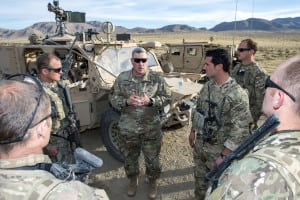
Chief of Staff Gen. Mark Milley, whose number-one priority has always been rebuilding and maintaining readiness, is turning his focus to bringing Army acquisition from the Industrial to the Digital Age.In a letter sent Oct. 3 to general officers and signed by Milley and Acting Secretary of the Army Ryan McCarthy, Milley calls for an overhaul of the sluggish processes by which the Army buys and fields weapons in order to regain the technical overmatch it has enjoyed since World…

 By
By 











